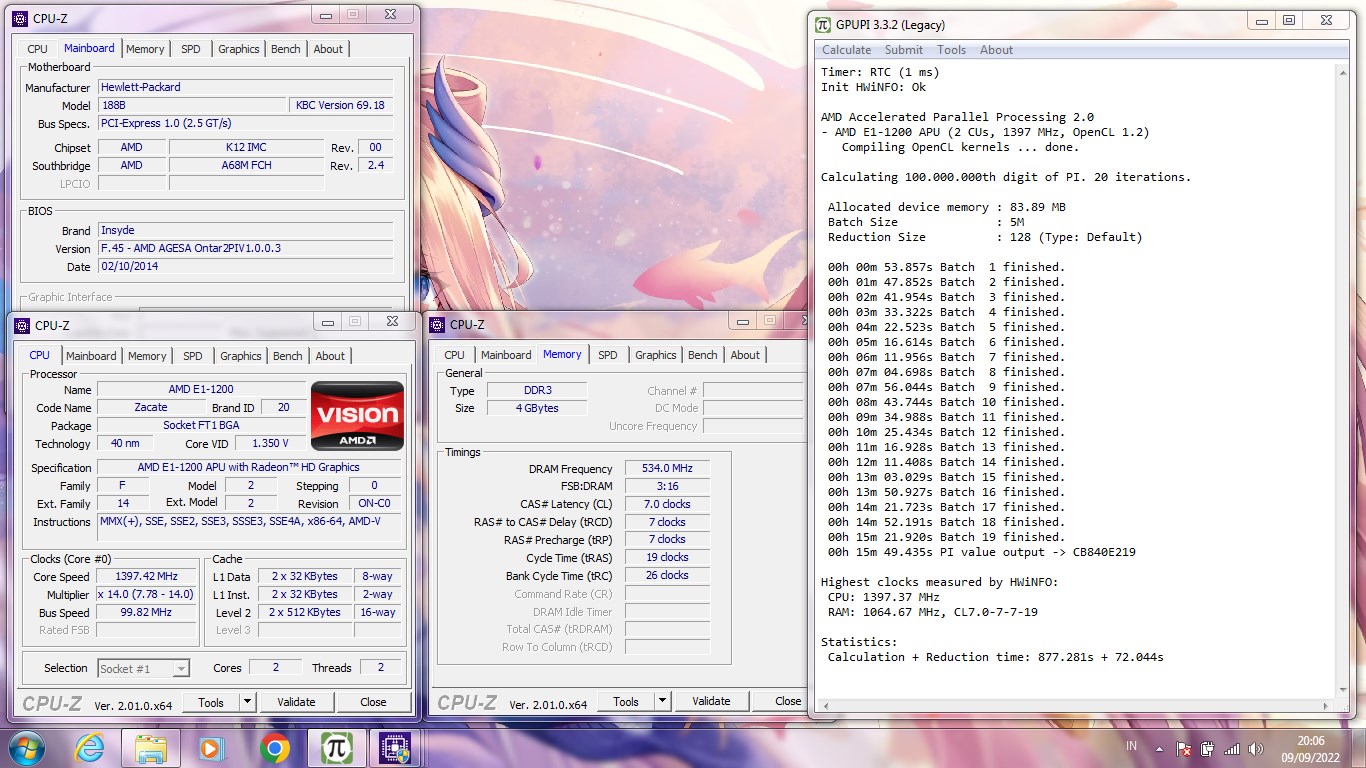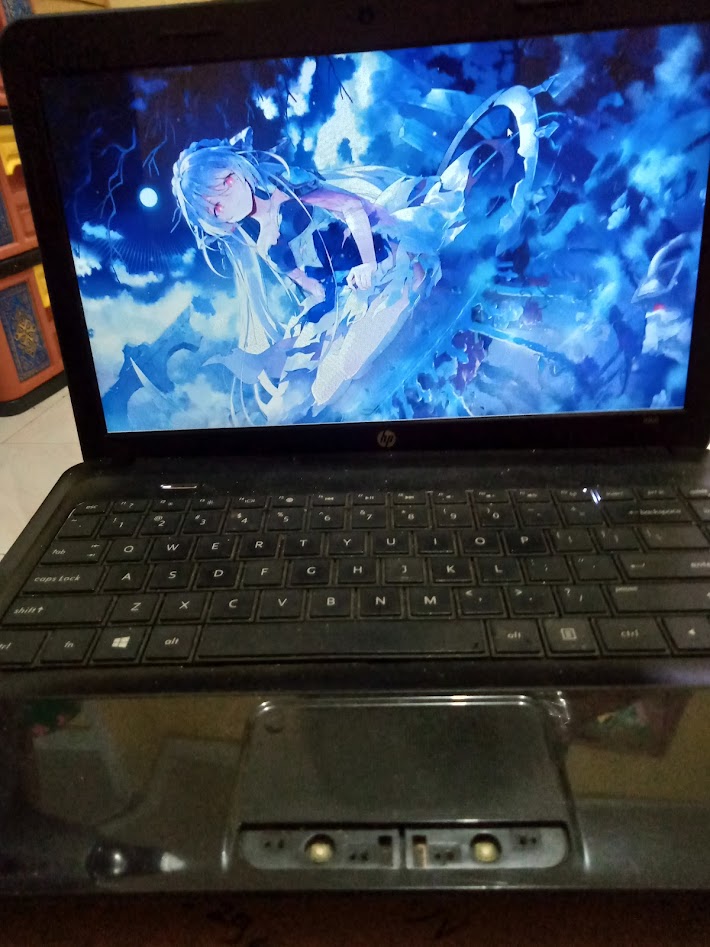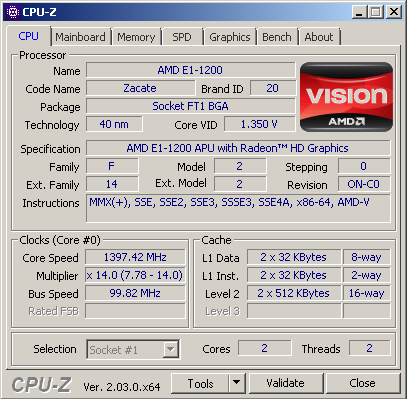GPUPI for CPU v.3.3 - 100M score 15min 49sec 435ms with a E1-1200
Thursday, 01 January 1970 07:00 | Update at 2 months ago
Media Gallery
Screenshot

Device, Setup, etc



URL
https://hwbot.org/submission/5076721https://bit.ly/3d1xRZ3
Information Detail
Hardware: AMD E1-1200
Specs:CPUID : AMD E1-1200 APU with Radeon(TM) HD Graphics
Architecture : x86
Codename : Zacate
L3 Cache : -
Clock : 1.4GHz
Core/Thread : 2/2
TDP : 18W
Technology : 40nm
Socket : FT1 BGA 413-Ball
IGPU : AMD Radeon HD 7310
See more specification...
Software: GPUPI for CPU v.3.3 - 100M
Score: 15min 49sec 435ms
About: GPUPI for CPU v.3.3 - 100MGPUPI for CPU v3.3 – 100M is a high-precision computing benchmark designed to test the performance of processors (CPUs) in calculating the value of π (pi) to 100 million decimal places. This benchmark uses the highly efficient BBP (Bailey–Borwein–Plouffe) algorithm, specifically designed to measure the speed and efficiency of CPUs in performing complex mathematical calculations using parallel architecture.
The 100M version of this benchmark offers a moderate workload—challenging enough to measure system performance and stability, yet still completable in a relatively short time by modern CPUs. Therefore, this benchmark is ideal for both quick testing and performance comparisons between different systems or processor configurations.
GPUPI for CPU v3.3 supports multi-threaded execution, allowing all CPU cores and threads to be utilized optimally to accelerate the calculation process. The benchmark score is expressed in units of time (seconds), where a lower value indicates better CPU performance in handling numerical computational workloads.
In addition to being a raw performance measurement tool, GPUPI 100M is also frequently used by overclockers and system developers to test overclock stability, cooling effectiveness, and verify performance consistency after system changes such as BIOS updates or memory tuning.
With the integration of BenchMate in version 3.3, benchmark scores are also more secure from manipulation, making it a credible tool for professional testing and official benchmark competitions.
Overall, GPUPI for CPU v3.3 – 100M is a highly effective lightweight-to-midweight benchmark for evaluating a CPU's numerical computing capabilities in real-world and technical scenarios, while remaining efficient in terms of execution time.
Released in 2012 as part of the Brazos 2.0 family, the AMD E1-1200 is a power-efficient processor aimed at entry-level laptops. It has a 2 core and 2 thread configuration with a fixed clock speed of 1.4 GHz, with no support for Turbo Core technology. Built with a 40nm fabrication process, the E1-1200 has a TDP value of 18 watts-efficient enough for portable devices that emphasize low power consumption and longer battery life. Despite its limited performance, the E1-1200 was a popular choice in its day thanks to its affordable price and ability to handle light computing needs.
One of the main advantages of the AMD E1-1200 is the integrated Radeon HD 7310 GPU, which offers better graphics performance than Intel's entry-level graphics solutions at the time. This GPU has the ability to play HD resolution videos smoothly, as well as run light games such as Counter Strike 1.6, Plants vs Zombies, or other casual games with minimum graphics settings. That said, this combination of CPU and GPU is not intended for heavy-duty work such as video editing, 3D rendering, or modern gaming. Overall performance is more optimal when used for tasks such as browsing, streaming videos, accessing social media, typing documents, as well as basic office applications.
However, it should be noted that the AMD E1-1200 is less suitable for heavy multitasking, especially in modern operating systems like Windows 10. With a low clock speed and no Boost feature, users may experience lag or limitations when opening multiple applications at once. In tests using the HP 1000 1b05au laptop, this processor was paired with 4GB DDR3 single channel RAM (2 DIMM slots) and tested on Windows 7, Windows 8, and Windows 10 operating systems. The results show that the most optimal performance is achieved on Windows 7 or Windows 8, while in Windows 10 the system tends to be slow although it can still be used for basic needs. As such, the AMD E1-1200 can still be relied upon as a power-efficient and inexpensive solution for users with very light computing needs.
Hardware Detail:
Device: HP 1000 1b05au
RAM: 4GB DDR3 Single Channel 2 DIMM
OS: Windows 7, Windows 8, Windows 10
* Not Avaiable
